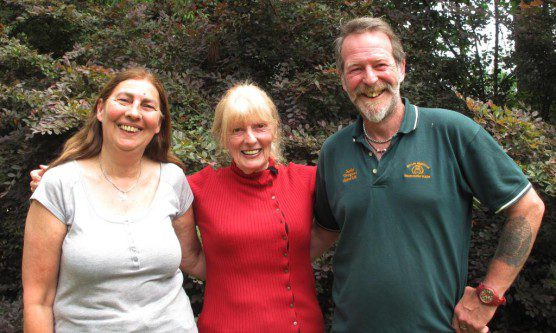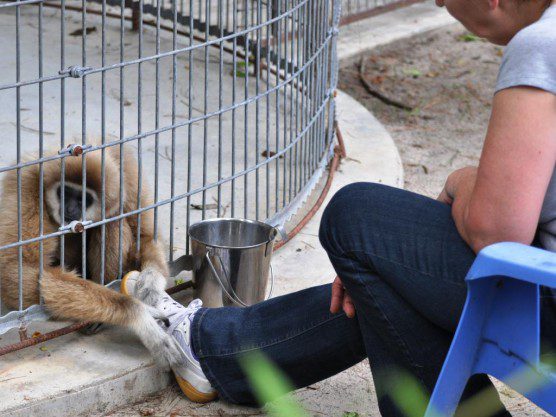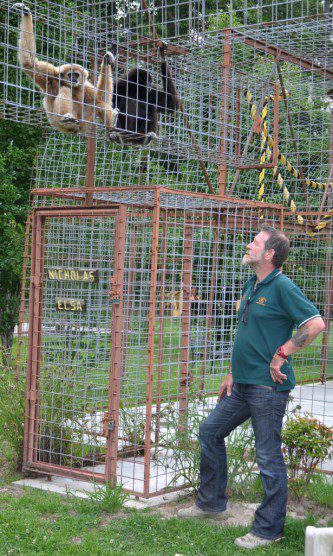Ape experts at our sanctuary

Say hello to Carol Fleming and her partner Keith Lloyd, two primate pros from the UK who have been spending a few days at the IPPL sanctuary!

Primate people Carol Fleming (left) and Keith Lloyd have been visiting with Shirley and the gibbons the past couple of days.
When I first started chatting with them, they claimed that they had led very boring lives. I’m sorry to tell you: they were lying.
Carol started working with gibbons at the UK’s Twycross Zoo in 1988. Twycross was intially known for its chimps (and for the fact that they were the first zoo in the UK to house all four large ape species—chimp, gorilla, orangutan, and bonobo); the zoo now has about 42 primate species, altogether. But the facility has always had some 35 to 40 gibbons, too: as many as seven different species, including some incredibly rare animals, like the Kloss’s gibbon from the Mentawai Islands, a species that is almost never seen in captivity.

Carol put her 23+ years of experience as a gibbon keeper to good use!
After 23 years, Carol can claim to have been the mother to seven gibbons herself, having hand-reared that many babies at one point or another. Each time, that meant carrying about her young charge practically daily for a year-plus—yes, taking the youngster home in the evening and continuing to perform her regular keeper duties during the day. “It’s just like caring for a human child,” she said. “The first few months, they wake up every couple of hours throughout the night, needing to be fed. But they always saw lots of other gibbons, so they never became too humanized.”
One of her proudest achievements, in fact, is becoming a gibbon grandmother. One of Carol’s white-handed female foster gibbons now lives at the Fota Wildlife Park in Ireland and has successfully reared three babies of her own.
Carol first became connected with IPPL in 1993, when we paid her way for six months to help out the Wild Animal Rescue Foundation, a grassroots group in Thailand that was in need of someone with expertise to establish helpful routines and standards of care. (“The first two months I was homesick, but after six months I didn’t want to leave!”) In 1996, after a follow-up visit to WAR, Carol attended IPPL’s third biennial meeting to give our supporters an update on her achievements there.

Our newest gibbon, Spanky, had fun with Carol’s shoes and laces.
She now works at the Drayton Manor Zoo, where, after decades of working “90% with gibbons, 10% with chimps, gorillas, and orangutans,” she has switched gears slightly and now spends much of her day with marmosets, tamarins, and macaques—but one of her gibbon foster children is there, too, to remind her of old times.
Carol’s partner Keith is a primate person, too, and always has been. He is also very pragmatic-minded: his photo roll of IPPL contains many detailed images of our gibbon facilities and earth moving equipment. (And he spent some time this morning jotting down suggested gibbon housing layouts for us. Thanks, Keith!) He also works at Drayton Manor, where he divides his time between looking after animals and troubleshooting maintenance issues. He also has an eye for enrichment techniques: he pioneered the extensive use of rope in great ape enclosures, a practice that is now mainstream in the UK.

Keith admired our extensive aerial runway system: Nicholas (left) and Elsa showed him how it all works!
Even when he was a kid, he says, he would write to zoos and ask them about how they cared for their apes. Then he would show up and ask tons of questions. (“I had an inquiring mind.”). By now, he has 37 years of experience, in the UK and Borneo, working with a variety of primates, but especially gorillas. Under his care, the gorillas at Twycross produced their first offspring: “Definitely a ‘Yay!’ [fist-pump] moment for me!” he says.
How do gibbons compare with larger bodied apes? “They come from a different planet!” he says. “The gibbon psyche is completely different.” With chimps and gorillas, he says, you can learn to tell what they’re thinking, but gibbons don’t really reveal their thoughts. And, when they do take action, they’re so much quicker!
It has been a pleasure to host such knowledgeable and helpful visitors as Carol and Keith. (And we are grateful for their generous patronage of our merch, too!)

